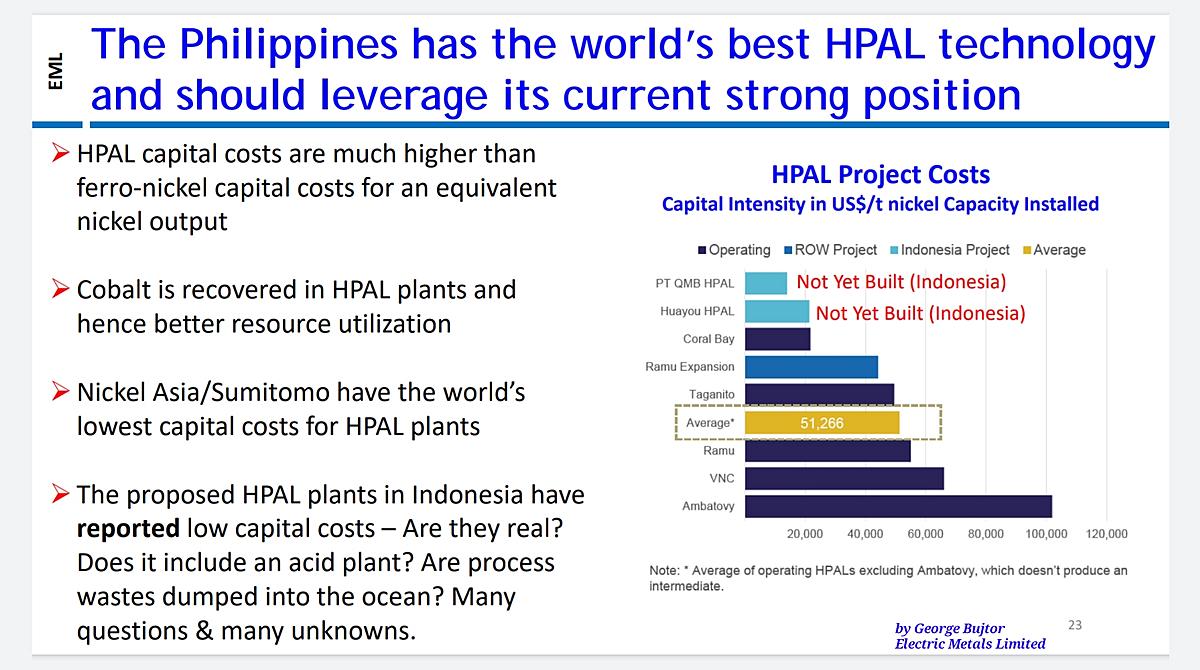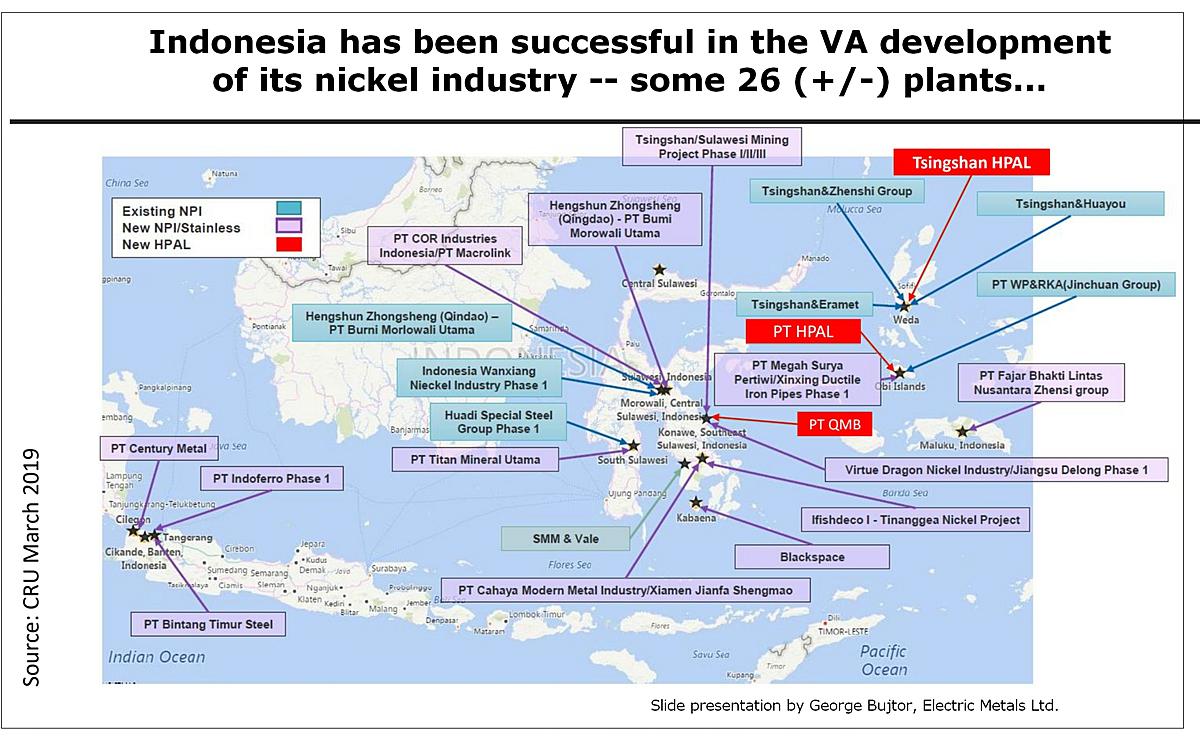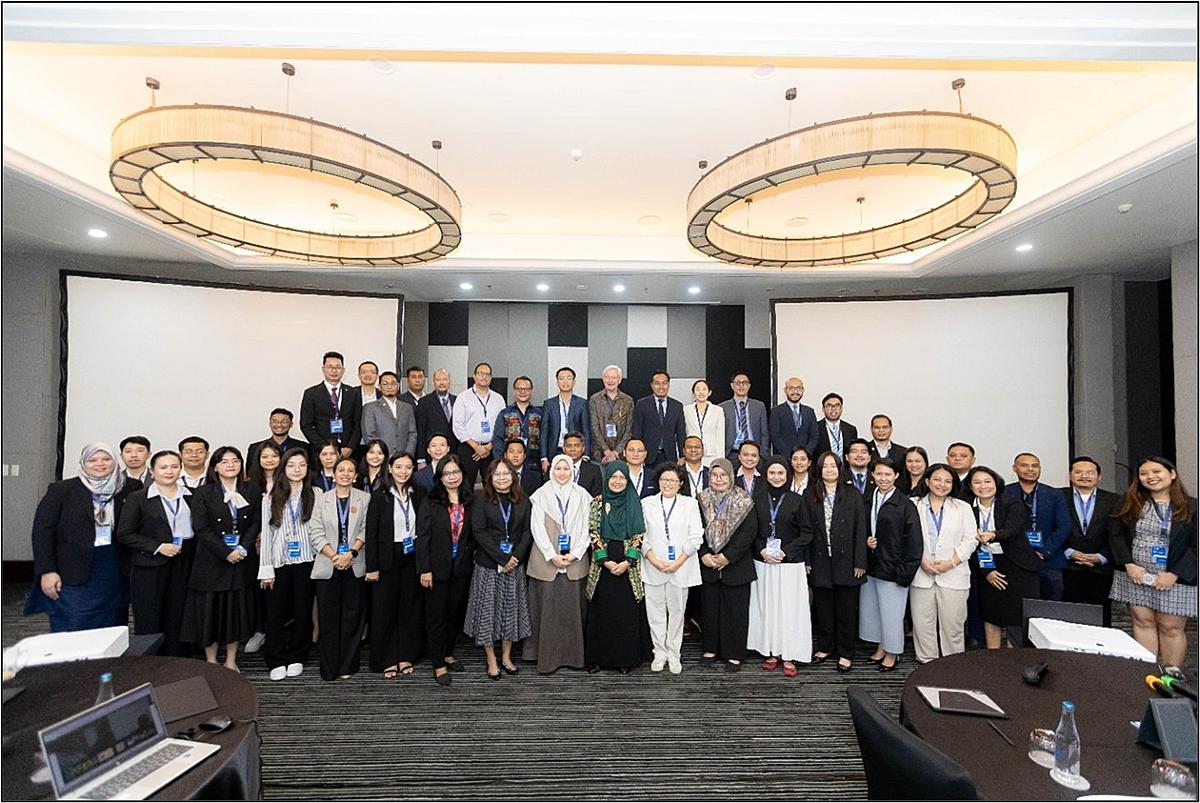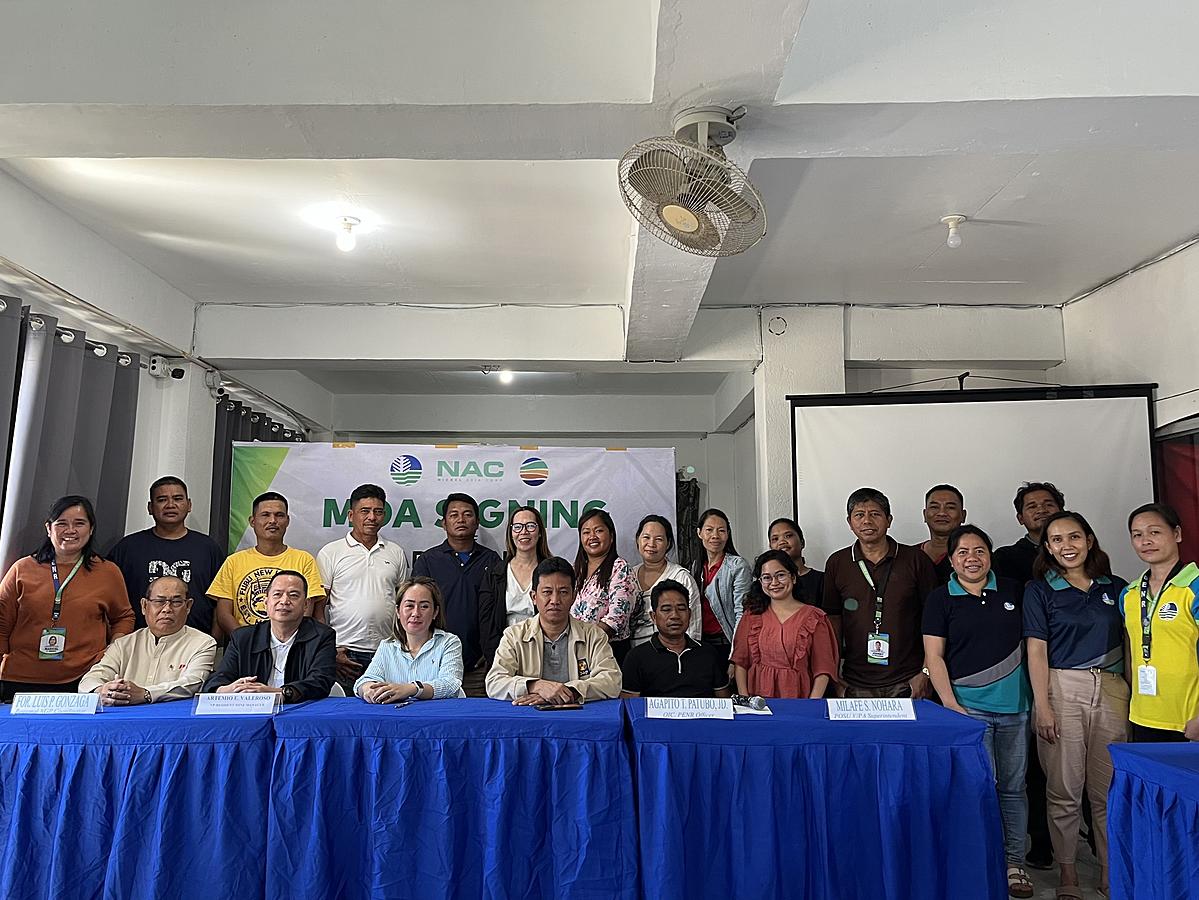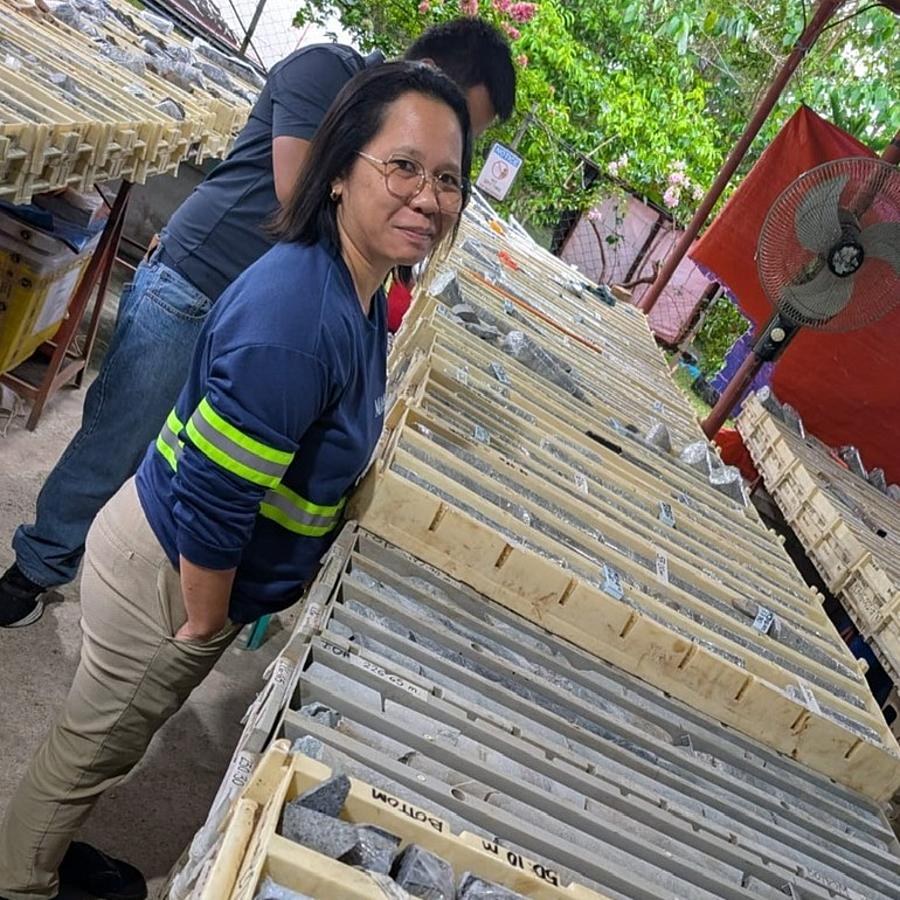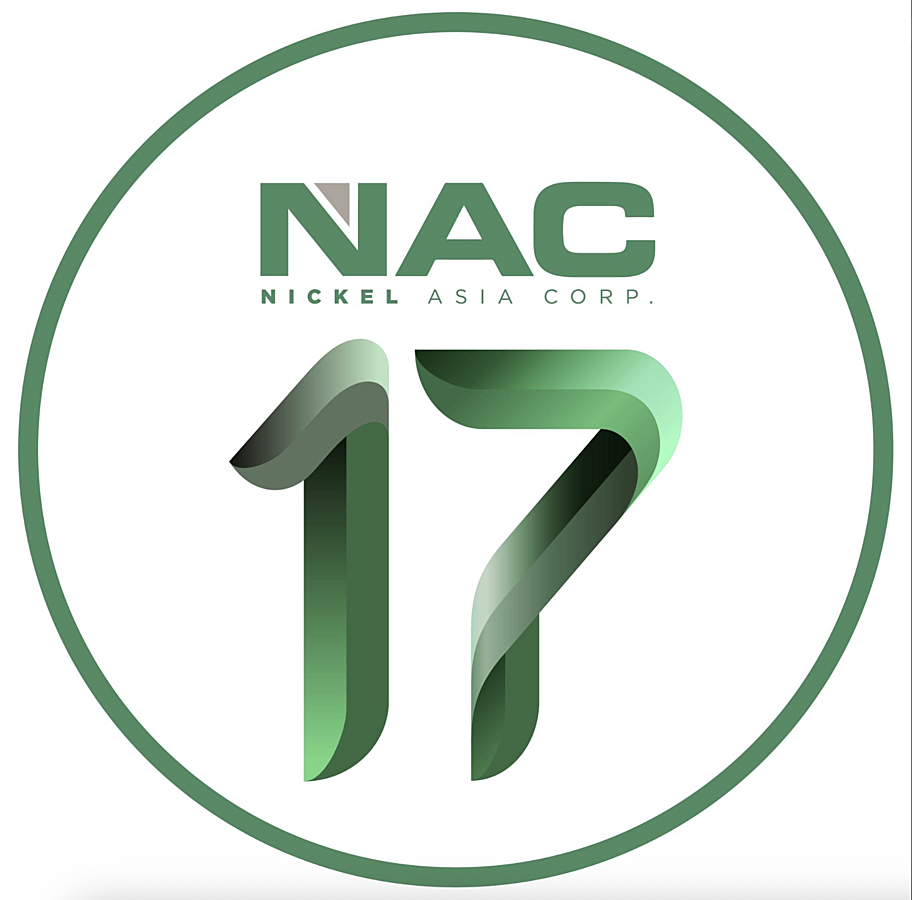Previously, we featured an update on the mining regulations in the Philippines. We also examined the export volumes of nickel ore from the Philippines and how these had been affected by Indonesia's exports. Lastly, we discussed the viability of the Philippines' laterite ore deposits and what this could mean for future production. These were the scope of a presentation by Mr George Bujtor last September at the 7th Asian Nickel Conference in Jakarta, Indonesia. His report is titled “Philippines: Regulatory Update and the Potential of the Philippine Laterite Ore” - “How the Philippines was Surpassed by Indonesia in the Laterite Nickel Industry”.
Mr Bujtor is the CEO and owner of private companies, namely Electric Metals Limited (EML) in Hong Kong and PT Electric Metals Indonesia. These are companies which are developing the innovative EML Process for the low-cost leaching of nickel laterite ores. The EML Process is the first of its kind in green technology in nickel processing, and he introduced this at the Asian Nickel Conference in Indonesia last September.
Mr Bujtor is an expert in the technical, financial and commercial aspects of mining operations with over 35 years of experience in the industry. He has extensive work experience in the past as General Manager and Managing Director in Rio Tinto, Australia. In the Philippines, he is the former CEO of Toledo Mining Corporation and Berong Nickel Mine in Palawan, as well as CEO of Atlas Mining Corporation.
As a review from Part I of our article, we learned from Mr Bujtor that the Philippines is currently Asia's leading supplier of nickel and cobalt which are raw materials for the battery sector. He stated that with the right policies, the Philippines could become one of the world's leading suppliers of battery raw materials, including battery manufacturing. [1]
He said, "Both the Philippines and Indonesia have the resources to dominate the nickel industry. The future growth will be in stainless steel and the battery sector. "
"Over the next 4 to 5 years, nickel demand growth will be in the stainless steel and battery sectors. Indonesia will continue to dominate the NPI growth and investment. The Philippines will only be able to compete in the battery sector."
Now, what is the future of the Philippine laterite nickel ores? With regard to the competitiveness of Indonesia versus the Philippines, he mentioned that, "Relative to Indonesia, the Philippines has NO competitive advantage in ferro-nickel production." He gave the following key points:
- Indonesia has built, and continues to build, power stations to provide the electricity to its ferro-nickel industry. The Philippines has limited coal resources and a negative view of coal-fired power stations.
- With past high grading and sales of saprolite ores, little high-grade saprolite tonnage remains in the Philippines to produce low cost ferro-nickel/NPI.
- Indonesia has the advantage of having considerably higher saprolite ore grades and lesser environmental controls. These are key cost drivers.
- The future for the Philippines is not in ferro-nickel or NPI.
He concluded, "The future of the Philippines lies in the processing of its laterite ores as battery raw materials…” Here is why:
- The Philippines is currently one of two producers of battery raw materials in Asia, through the Nickel Asia/Sumitomo JV.
- Sumitomo has the world’s leading technology for HPAL.
- The Philippines has large resources of laterite ores with medium to high Ni, Co & Sc grades.
- Hydrometallurgical processes like HPAL require very little electricity relative to ferro-nickel production.
- The Philippines leads the world in an innovative atmospheric leaching process adapted for the tropics – ‘The EML Process’ –a low cost atmospheric leaching process.
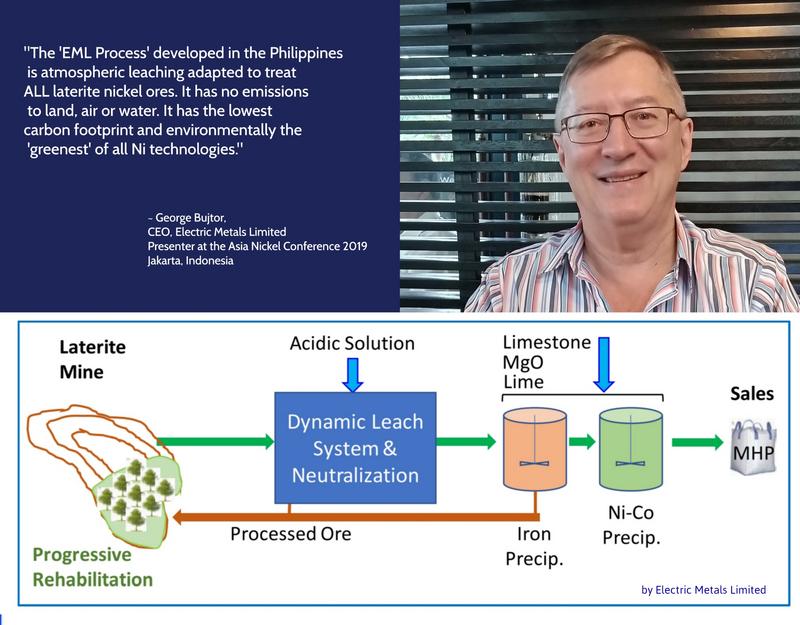
Green products for a green future
As mentioned earlier, The EML Process is the first of its kind in green technology in nickel processing. "The low environmental impact either locally or globally of the EML process not only produces products green in colour (nickel), but green in nature to promote the ever-increasing demand for battery and related metals to combat the continued burning of fossil fuels and consequent global environmental pollution." [2]
The EML Process was developed in the Philippines. It is an atmospheric leaching process (done at room temperatures and pressure) adapted to treat all laterite nickel ores. (The two methods of atmospheric leaching done by EML are vat leaching and tank leaching.) Here are some key points:
- Test work undertaken in the Philippines leveraging off Cu, Au, Li and Ni experience
- “Closed system” with leached ore placed back into mined-out areas –no emissions to land, air or water
- Lowest carbon footprint and environmentally the “greenest” of all Ni technologies
- Disruptive technology with lowest capital cost in the industry at <U$5,000/t nickel capacity
- Does not require a power station [1]
"The EML Process is not only simple and safe but provides an environmental solution to the laterite nickel industry hitherto much maligned for its poor environmental rehabilitation performance, excess CO2 emissions and excess waste generated."
“The principals behind Electric Metals Limited have developed an innovative leaching process to treat tropical nickel laterites, both saprolite and limonite ores. The process can also be applied to other ores of lithium, copper gold, uranium etc.”
“The leach process has industry lowest capital costs and is environmentally far superior to the more complex and expensive technologies such as the High Pressure Acid Leach (HPAL) and Rotary Kiln Electric Furnace (RKEF) processes.” [3]
The three essential steps in the EML Process include:
1. Leaching of the laterite ore: Mined ore is contacted with dilute sulphuric acid to dissolve the nickel & cobalt (as well as other metals like aluminium, scandium, manganese, etc).
2. Metals Recovery: Solutions containing the metals of interest are treated to recover the contained nickel & cobalt initially, as a mixed hydroxide product containing 35% to 55% nickel and 1% to 3% cobalt.
3. Neutralization: Leached ore is washed and neutralised prior to being returned to the mined-out open pit. The leached ore residue is non-toxic and chemically inert and suitable for revegetation or agriculture.
In summary, while the issue of nickel processing and environmental concerns may be a topic of debate among environmental activists and industrialists, the solution lies in having a gamechanger in the nickel processing arena. Today, we now have a low-cost and environment-friendly nickel processing method called The EML Process. This offers a promising future in the industry and for the environment as well.
-----
You can read part 1 in this link:
What the PH can Learn from Indonesia’s Successful Nickel Industry – Part 1
by Marcelle P. Villegas, Philippine Resouces Journal
Nov. 5, 2019
-----
Acknowledgement:
Thank you to Mr George Bujtor of Electric Metals Limited.
-----
Reference:
[1] Bujtor, George. (11 Sept. 2019). “Philippines: Regulatory Update and the Potential of the Philippines Laterite Ore -- How the Philippines was Surpassed by Indonesia in the Laterite Nickel Industry”. Presented at Asian Nickel
Conference 2019, Jakarta Indonesia
[2] Retrieved from Electric Metals Limited website - https://electricmetalsltd.wordpress.com/
[3] Bujtor, George and Wallwin Peter. (02 May 2020). “The EML Process”. Electric Metals Limited investor flyer.
Photo credit: Marcelle P. Villegas, Philippine Resources Journal

